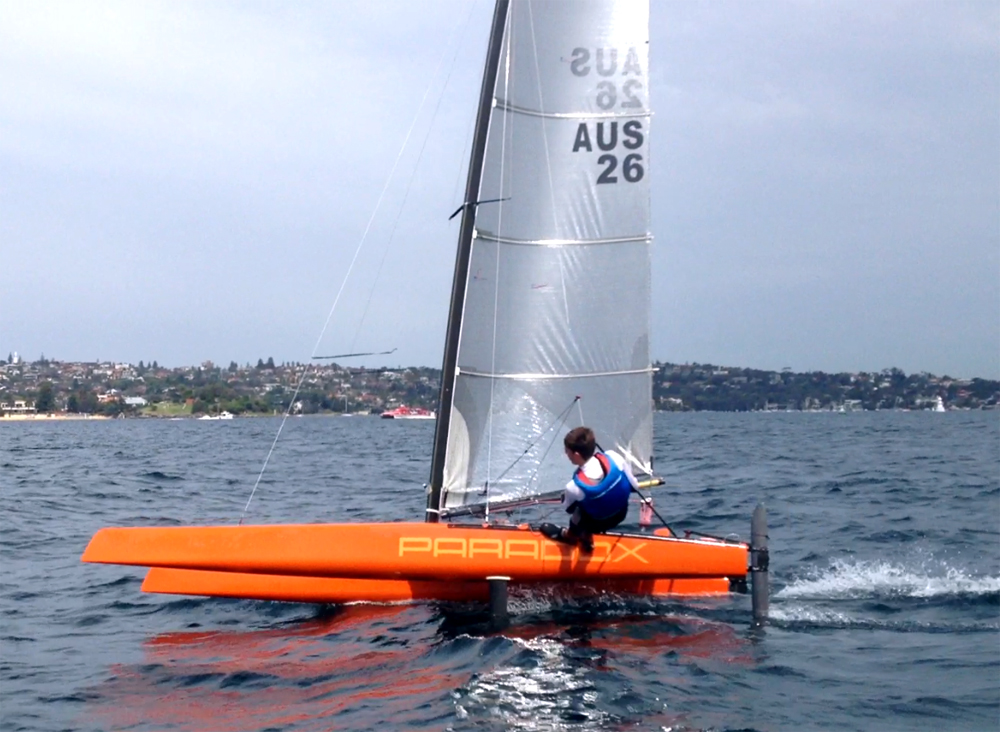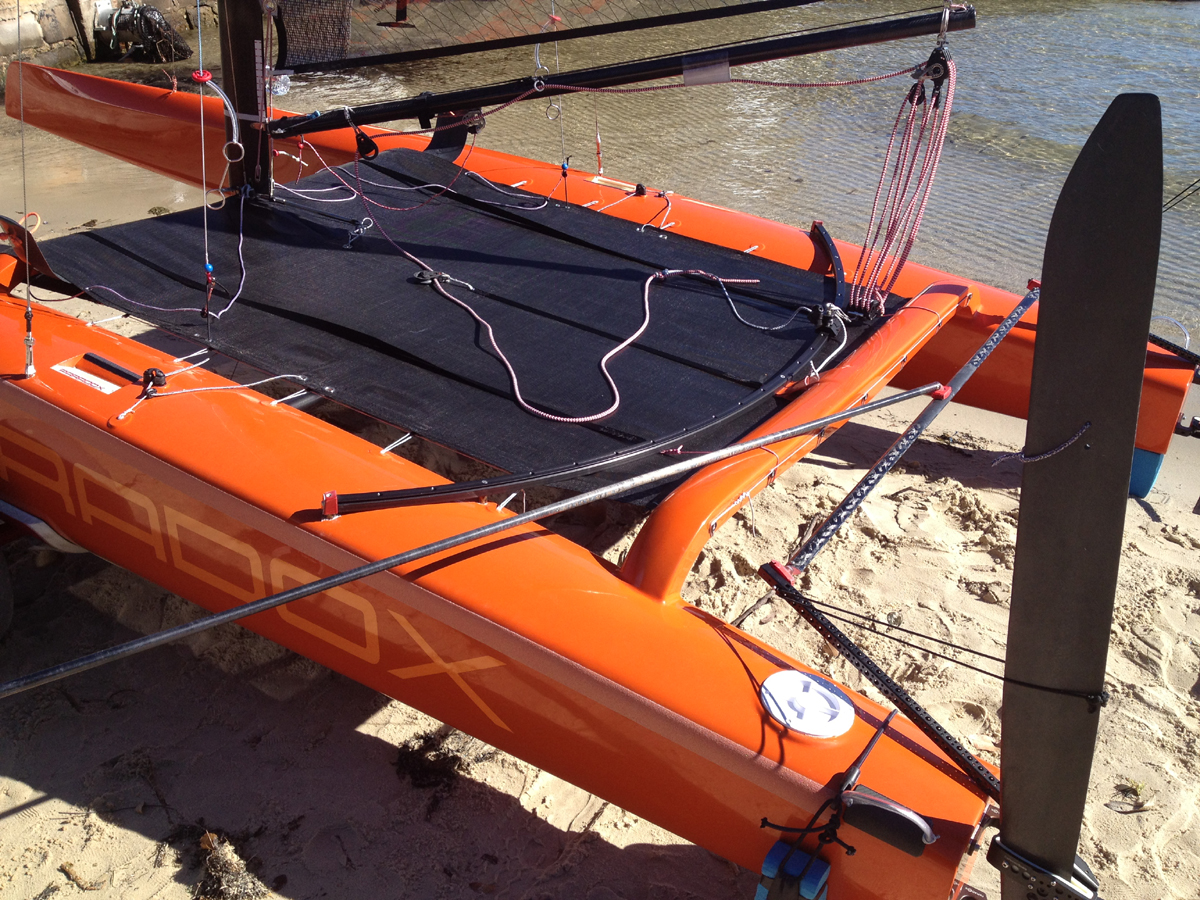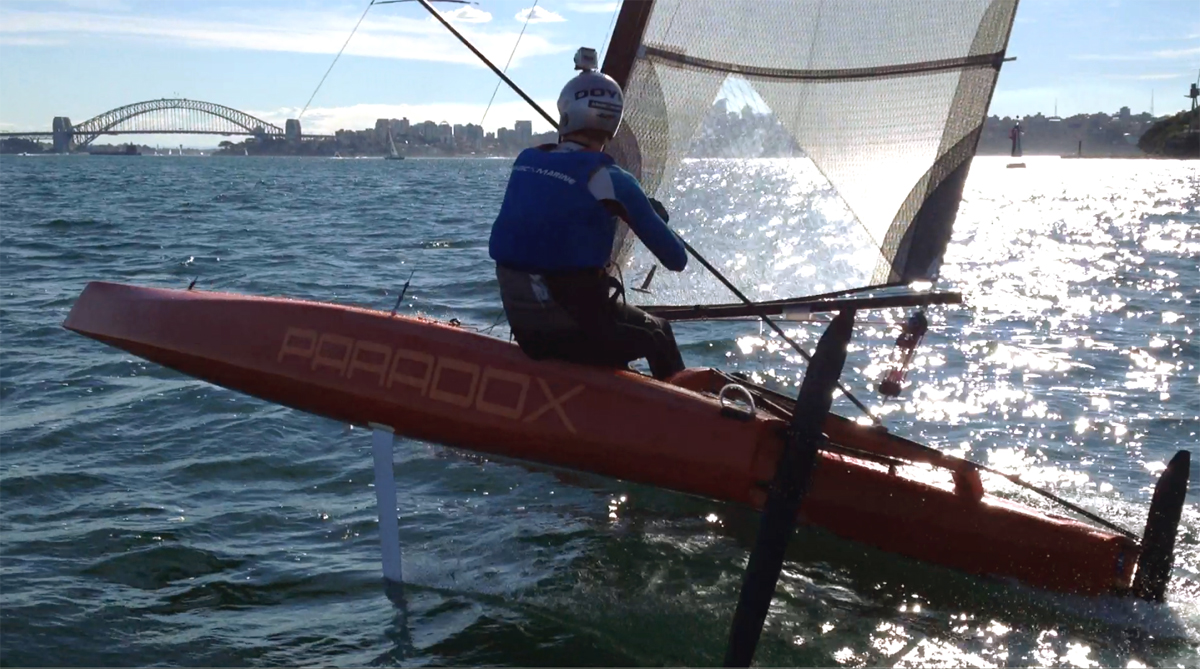Paradox A-Cat update with Dario Valenza
We contacted Dario Valenza who is building the Paradox in Australia for feedback on his project. We also asked him about the C-Class event at Falmouth where the Hydros team showed up with foils that can be reversed to suit weather conditions. Dario has made a similar approach for his new Paradox Rudders. Check Dario's website for more updates on the Paradox and some great technical articles at http://carbonicboats.blogspot.com.au/
Dario Valenza Paradox Update:
"Our programme is going well, with lots of testing, two boat sessions and training in anticipation of the upcoming season.
Version 2 is a completely new boat with different hull volume distribution to suit a totally new foil concept.
The boat is capable of full foiling at high speed using a very simple foil shape best described as angled planar foils. However the constraints of the class mean that a foil assisted mode has less overall drag most of the time in moderate conditions.
For those who ask whether this choice of angled foils is a step backward, keep in mind that the old 'angled straight foils' were limited by hitting the beam limit at the top when retracted and by the exit angle through the hull.
By bending our foils just below the hull, we get a useful dihedral angle and an efficient hull exit angle. Then the foils draw a straight line to the inboard limit, giving minimum wetted area, an even spanwise lift distribution and gradual lift reduction with increasing ride height. The new foils are also placed further aft to improve tacking performance. "
Hydros C-Class reversible foils An interesting decision.
"They have obviously done their numbers and decided foil lift had too high a cost in terms of drag below a certain speed.
It is an alternative to leveling the 'horizontal' foil at times when heave stability can be controlled by other means.
If the horizontal foil is always angled with the tip higher than the root, you always have the drag penalty from the component to leeward of foil lift - This component only being necessary when automatic heave stability is required.
By contrast, Groupama has aggressive outward bend in the top of their foil so that their foil can be made 'less stable' when boat speeds are too low to fully foil or when heave can be controlled through steering/weight placement. In this mode they get some foil assistance (upward lift) without adding sideforce. The penalty for their solution is that span (depth) is tied to heave stability. They are committed to having a deeper vertical when they want a more level horizontal foil. Generally this is OK because when the boat sails more slowly, a bigger (more area) and higher aspect vertical foil is desirable.
Adding a 'cant' adjustment to the upper foil bearing increases foil angle combination options at the expense of weight and complexity."
A Cat Comparison:
"Our foil solution on Paradox V2 is a bit different mainly because we want to make the boat more automatic to sail for the sole skipper/crew. We decided to eliminate on-the-water foil 'tacking' and foil rake adjustment.
Our foils are bent inward at the top. So when you put them fully down you get max lift (max dihedral angle with the tips right at the rule inboard limit).
In light winds you can pull the foils up slightly so they become shorter and vertical. That way you have two 'plain' vertical foils in the water, each with a bit less area. This means you don't need to tack the foils.
Reversing the rudders makes sense on an A because in light winds pitch stability is not an issue."
C-Class Images by Meredith Block






